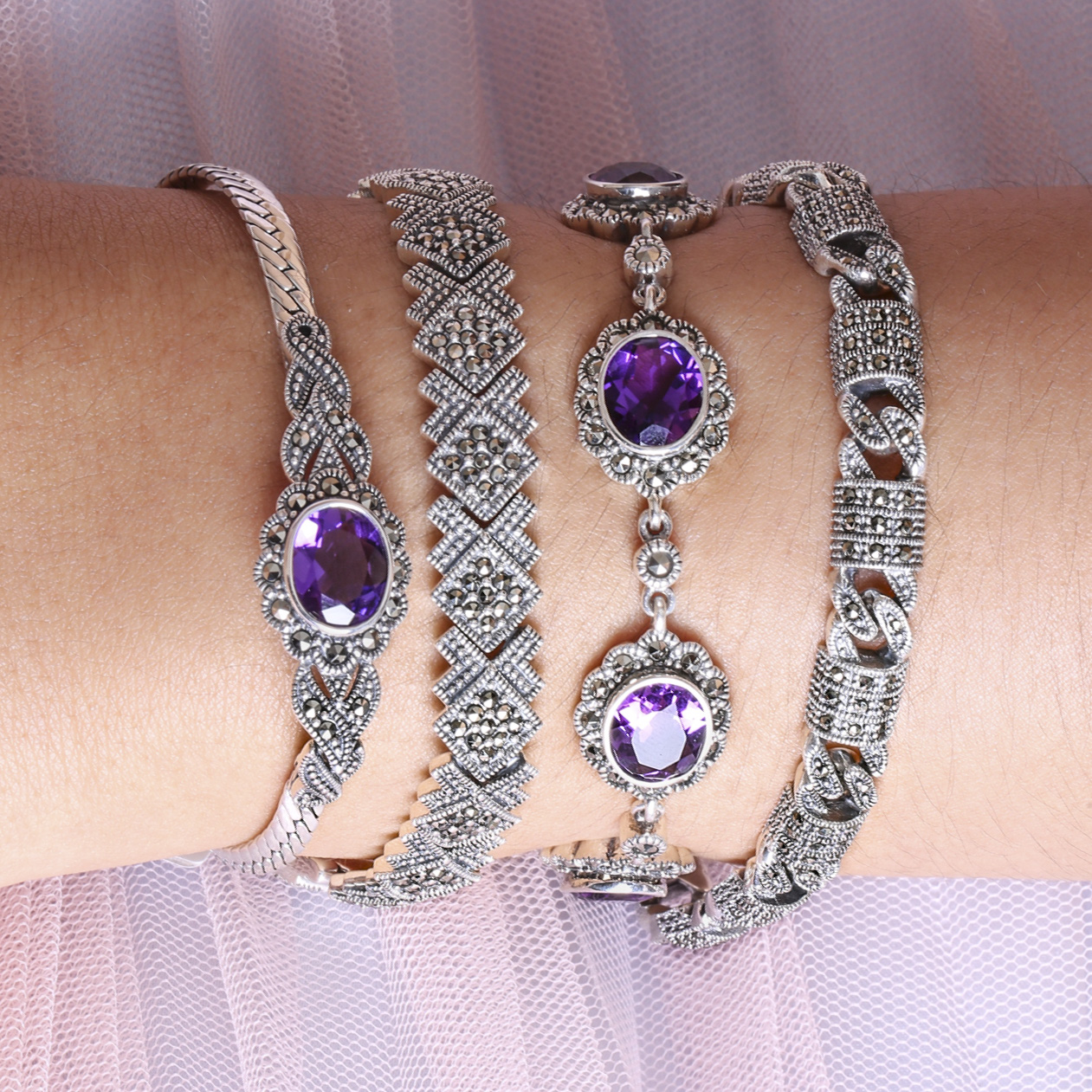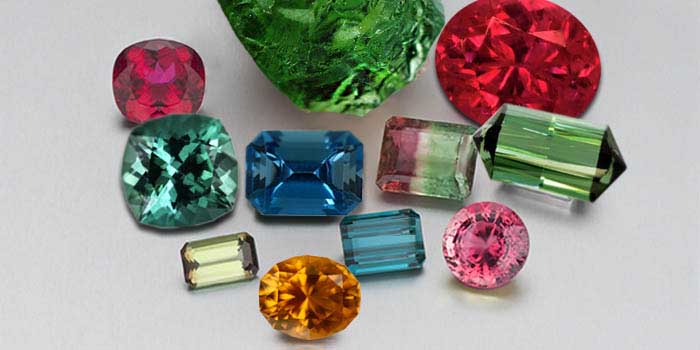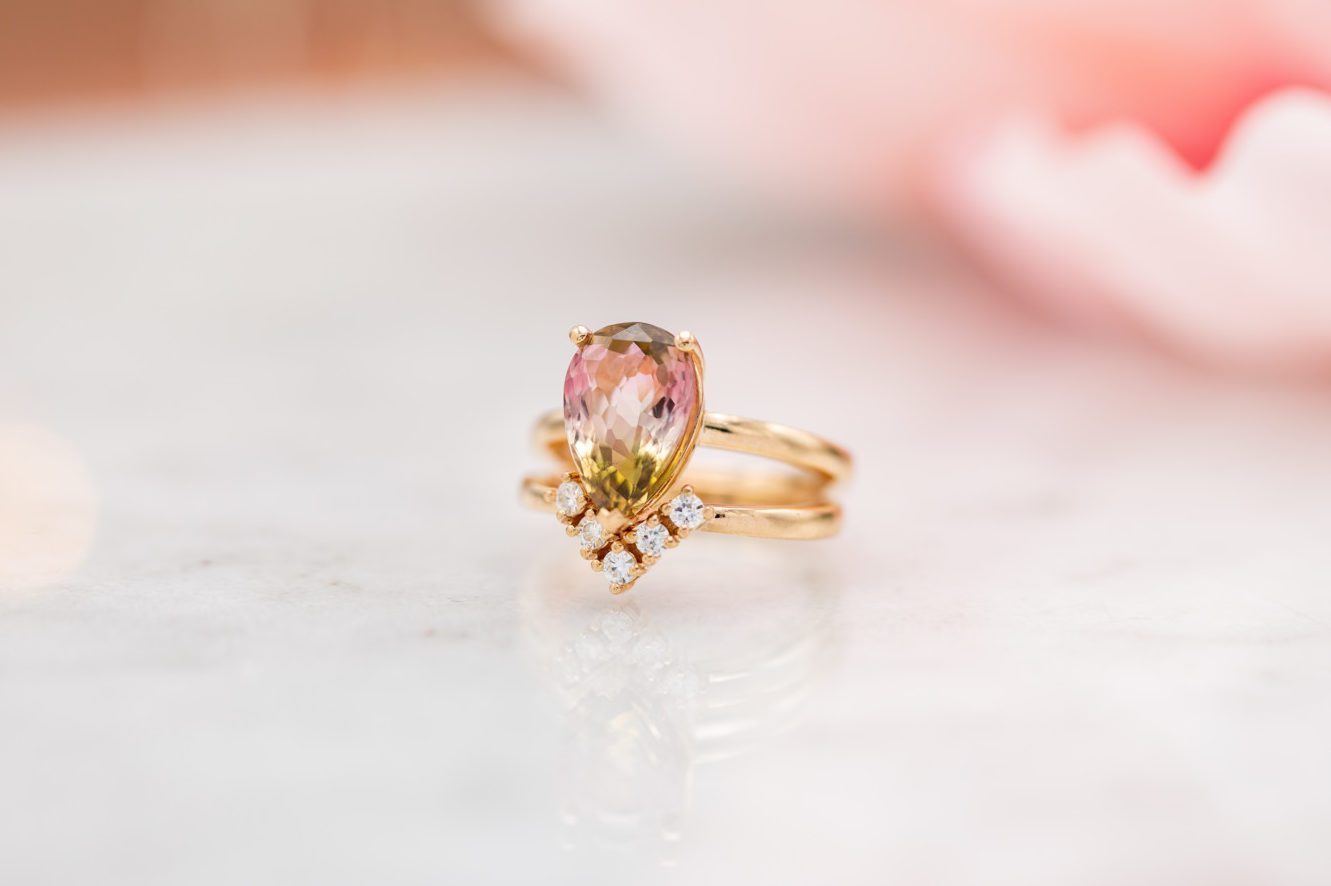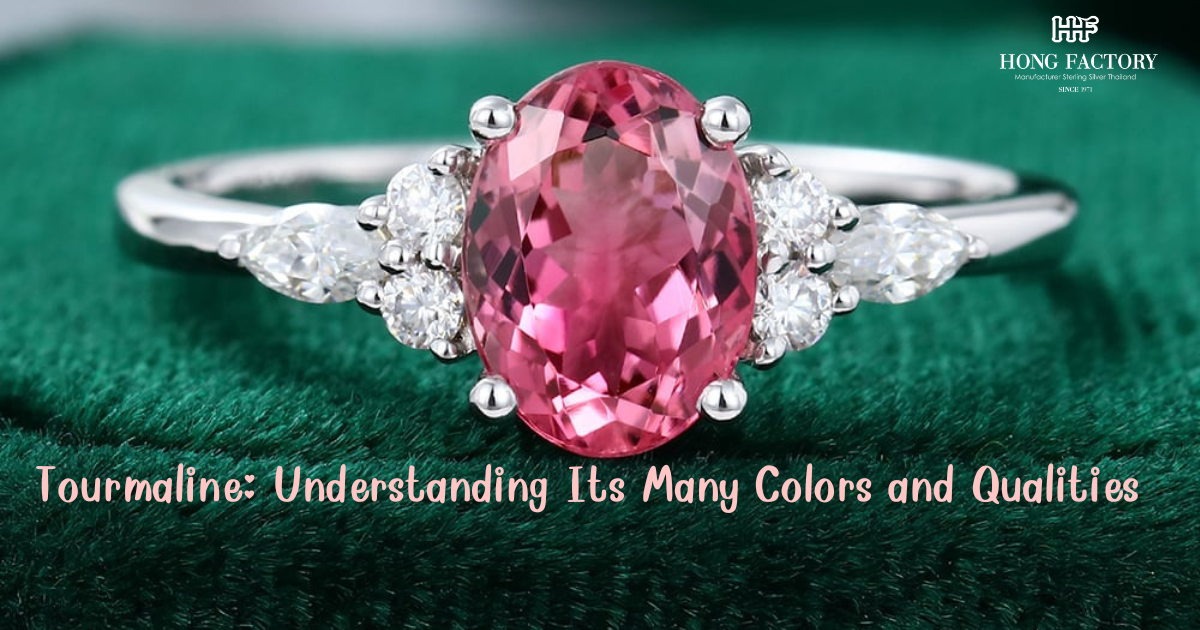Tourmaline is one of the most colorful and complex gemstones in the mineral kingdom. Prized for its vast range of hues and energetic diversity, tourmaline has become a favorite for both jewelers and crystal enthusiasts.
Each color variety carries its own meaning and metaphysical attributes, making tourmaline a gemstone of personal expression, spiritual balance, and healing potential.
This comprehensive guide delves into the types of tourmaline, their physical characteristics, symbolic meanings, practical uses, historical significance, and how to choose and care for them, bringing the total insights to a rich 1,500 words.
Tourmaline: Understanding Its Many Colors and Qualities

What Is Tourmaline?
Tourmaline is a boron silicate mineral that occurs in a wide array of colors due to varying trace elements like iron, manganese, chromium, and lithium. Its name comes from the Sinhalese word “turmali,” meaning “mixed gems,” which aptly describes the stone’s diverse appearance.
Tourmaline crystals are commonly found in long, prismatic shapes with vertical striations, and they can be transparent, translucent, or opaque.
Tourmaline forms in igneous and metamorphic rocks, particularly in granite pegmatites, and is found in deposits across the globe, including Brazil, Afghanistan, Pakistan, Nigeria, Mozambique, the United States (particularly California and Maine), and Madagascar.
Physical Properties of Tourmaline
Chemical Formula: Complex borosilicate (general formula: XY₃Z₆(T₆O₁₈)(BO₃)₃V₃W)
Hardness: 7 to 7.5 on the Mohs scale
- Crystal System: Trigonal
- Luster: Vitreous (glassy)
- Transparency: Transparent to opaque
- Fracture: Uneven to conchoidal
Because of its hardness and durability, tourmaline is suitable for all types of jewelry and is also appreciated by gem collectors for its rich spectrum of colors.
Popular Color Varieties and Their Metaphysical Meanings
1. Black Tourmaline (Schorl)
- Color: Jet black
- Meaning: Grounding, protection, purification
- Chakra: Root chakra
- Uses: Worn or placed in a space to absorb electromagnetic radiation, psychic smog, and negative energy. Especially popular for empaths, healers, and those in high-stress environments.
2. Pink Tourmaline (Rubellite)
- Color: Pale pink to deep rose-red
- Meaning: Love, compassion, emotional healing
- Chakra: Heart chakra
- Uses: Supports inner healing from trauma and heartbreak. Promotes loving communication and deeper connections in relationships.
3. Green Tourmaline (Verdelite)
- Color: Light green to rich emerald-green
- Meaning: Vitality, abundance, health
- Chakra: Heart chakra
- Uses: Invigorates the physical body and emotional energy field. Known to stimulate cellular regeneration and immunity.
4. Blue Tourmaline (Indicolite)
- Color: Soft blue to deep teal
- Meaning: Communication, spiritual insight, tranquility
- Chakra: Throat and third eye chakras
- Uses: Enhances clarity in expression and opens intuitive channels. Ideal for meditation and deep healing sessions.
5. Watermelon Tourmaline
- Color: Pink core with a green rim (sometimes reversed)
- Meaning: Harmony, balance, joy
- Chakra: Heart chakra
- Uses: Aids in balancing masculine and feminine energies, emotional dualities, and inner-child healing.
6. Yellow Tourmaline
- Color: Lemon yellow to golden amber
- Meaning: Confidence, intellect, creativity
- Chakra: Solar plexus chakra
- Uses: Sharpens focus, strengthens willpower, and encourages creative problem-solving.
7. Brown Tourmaline (Dravite)
- Color: Brown to dark brown
- Meaning: Stability, endurance, self-acceptance
- Chakra: Root chakra
- Uses: Grounds emotional energy and fosters introspection and self-compassion.
8. Colorless and Multicolor Tourmaline
- Achroite (Colorless): Rare; symbolizes purity and clarity. Used for spiritual detox and connection to higher consciousness.
- Multicolor and Bi-Color Tourmaline: Each section brings a different vibrational influence. Useful for harmonizing multiple chakras and integrating polarities.
Healing and Energetic Benefits

Tourmaline is one of the most energetically versatile stones. Its metaphysical properties include:
- Protection and Shielding: Especially with black tourmaline, used to shield against toxic energy and psychic attack.
- Emotional Healing: Pink and green varieties support the emotional body by encouraging forgiveness, release, and compassion.
- Mental Clarity: Yellow and blue tourmalines enhance focus, memory, and communication.
- Chakra Balancing: Color variety allows targeting of specific chakras. Watermelon tourmaline in particular is used for overall emotional equilibrium.
- Stress Reduction: All types promote calmness, reduce overthinking, and ease emotional turmoil.
Tourmaline in History and Culture
- Ancient Egypt: Believed that tourmaline traveled along a rainbow during its formation, which gave it its array of colors.
- India: Used as a healing stone in Ayurvedic medicine.
- Medieval Europe: Carried as a talisman for artists and scholars to improve creativity and insight.
- Shamanic Traditions: Employed in rituals for grounding, protection, and energy redirection.
Tourmaline has been treasured throughout history for both its aesthetic beauty and energetic significance.
Tourmaline in Jewelry and Design
Tourmaline’s diversity makes it a favorite among designers and collectors:
- Engagement Rings: Pink and green tourmaline offer romantic, non-traditional alternatives to diamonds.
- Statement Necklaces: Watermelon and multicolor varieties add artistic flair.
- October Birthstone: Tourmaline is one of the two traditional birthstones for October, along with opal.
- Men’s Jewelry: Darker varieties like black and brown tourmaline are popular in masculine designs.
- Healing Jewelry: Beaded bracelets, pendants, and earrings for chakra support and daily energy alignment.
How to Choose the Right Tourmaline

When shopping for tourmaline, consider the following:
- Color: Select the variety that resonates most with your energy or intention. Rich, even colors are usually more valuable.
- Clarity: While some inclusions are common, high-clarity stones have better brilliance. Eye-clean stones are preferred for fine jewelry.
- Cut: Faceted cuts highlight brilliance; cabochons are used for softer or included stones.
- Origin: Brazilian tourmalines are known for vivid color; African sources offer variety and uniqueness.
- Treatment Disclosure: Some stones are heat-treated or irradiated to enhance color. Always ask for treatment details from reputable dealers.
Caring for Tourmaline
To maintain the beauty and energy of your tourmaline:
- Cleaning: Use warm, soapy water and a soft cloth. Rinse and dry thoroughly.
- Avoid: Ultrasonic and steam cleaners, especially for heavily included stones.
- Storage: Store separately from harder gemstones (e.g., sapphire, diamond) to prevent scratching.
- Energy Cleansing: Recharge with moonlight or by placing it on a bed of quartz or selenite. Smudging with sage or palo santo also works well.
Crystal Practices and Rituals
- Meditation: Hold black tourmaline for grounding or blue tourmaline for insight.
- Chakra Layouts: Place specific colors on associated chakras during energy healing sessions.
- Manifestation Grids: Incorporate yellow or green tourmaline in crystal grids for abundance and growth.
- Home Protection: Position black tourmaline at entry points to neutralize unwanted energy.
- Emotional Support: Carry pink or watermelon tourmaline during emotional transitions.
Tourmaline is truly a gemstone of many faces—physically colorful, energetically potent, and culturally revered. Its adaptability makes it one of the most versatile stones for anyone seeking beauty, spiritual support, or energetic protection.
Whether you’re a collector, healer, jewelry lover, or spiritual seeker, there is a tourmaline that aligns with your purpose. Its vast color spectrum and unique metaphysical benefits ensure that this stone continues to enchant and empower across cultures and generations.
